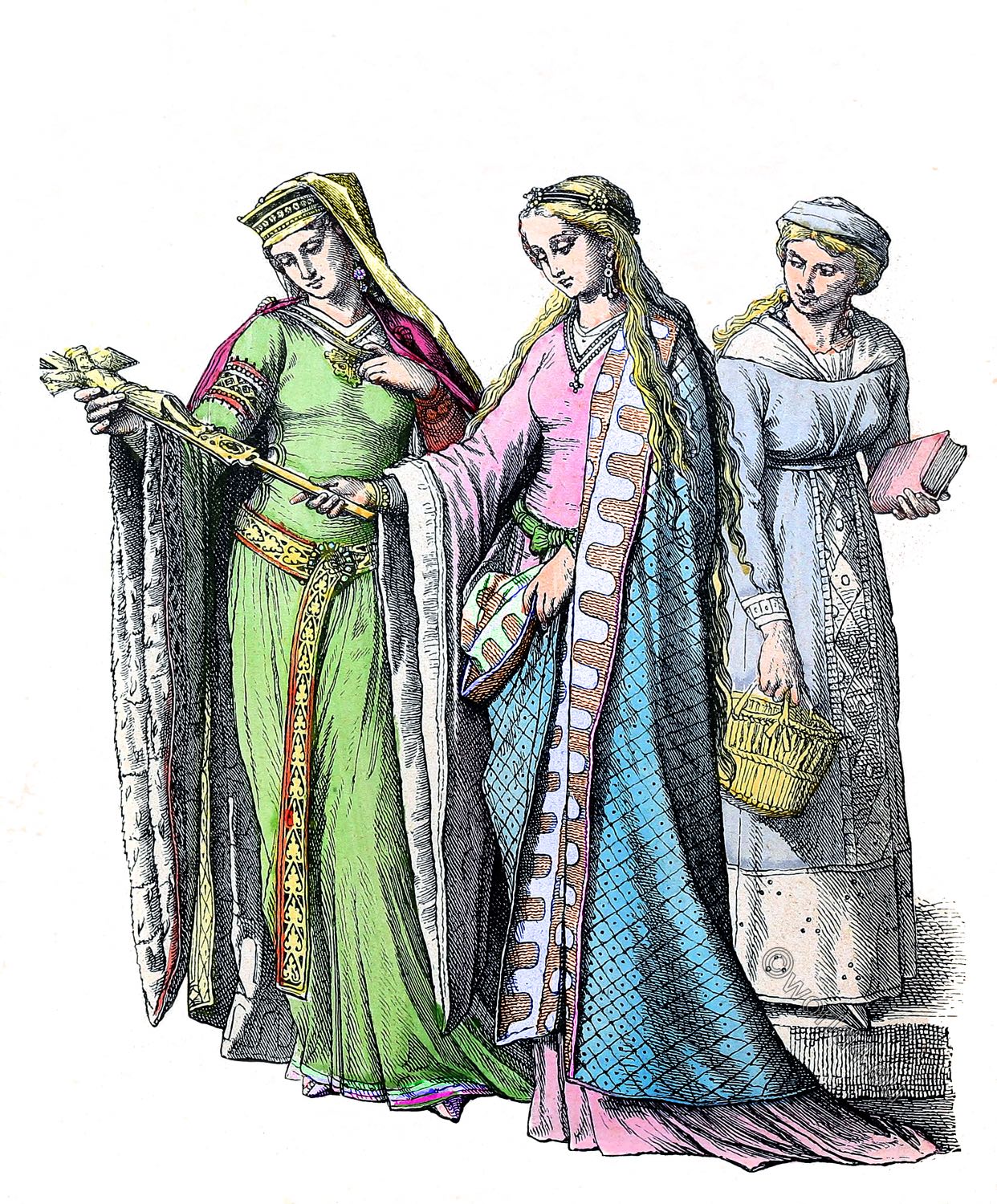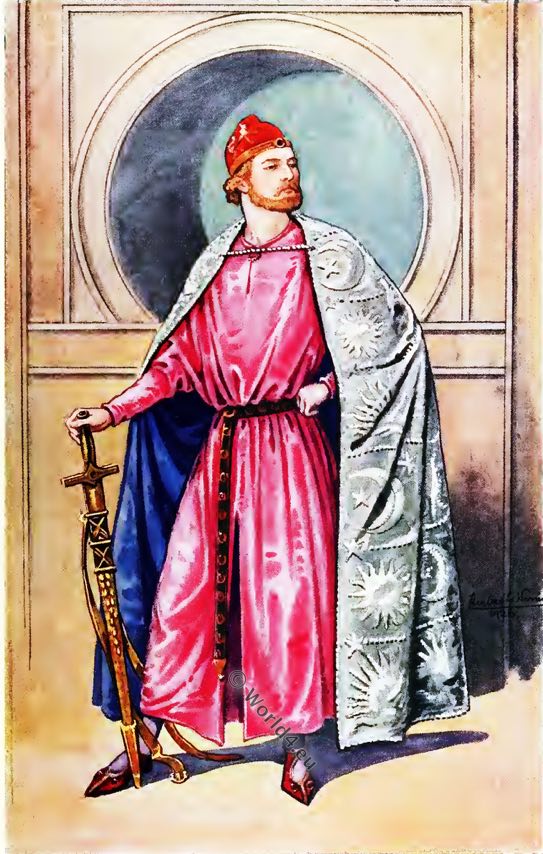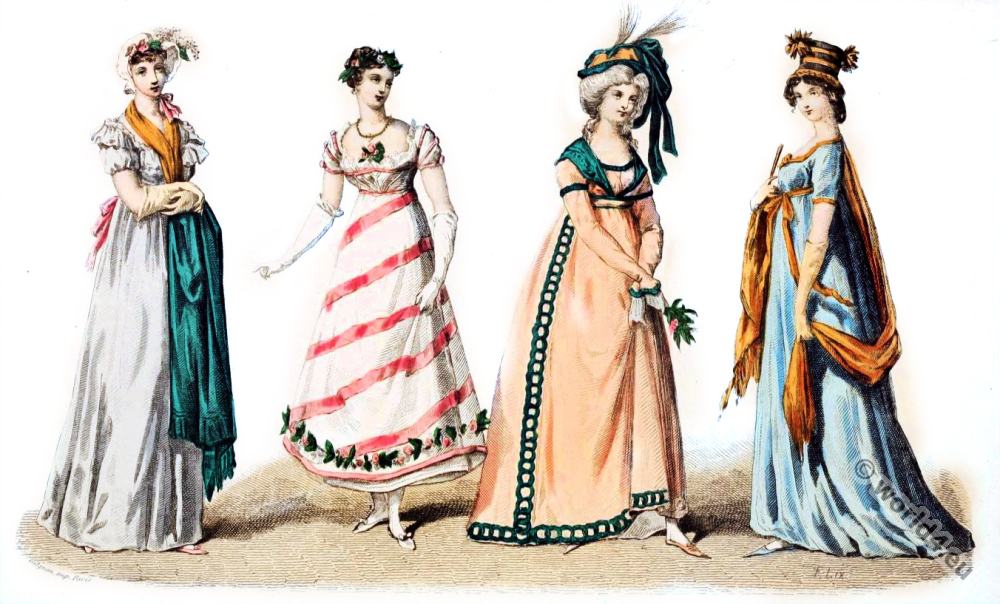The different forms of the hoop skirt in three Centuries.
Depending on form and epoch, a distinction is made between Verdugado, Panier, Crinoline or Bustle, Tournure (cul de paris). The hoop skirt first appeared in Spain around 1470 as a bell-shaped verdugado (Spanish for “guard of virtue”). Towards the end of the 16th century, a conical outline emerged from this in the Spanish costume. Almost simultaneously, an independent, barrel-shaped variant (Vertugadin) was developed in France, which can be seen on several portraits of Queen Elizabeth I.
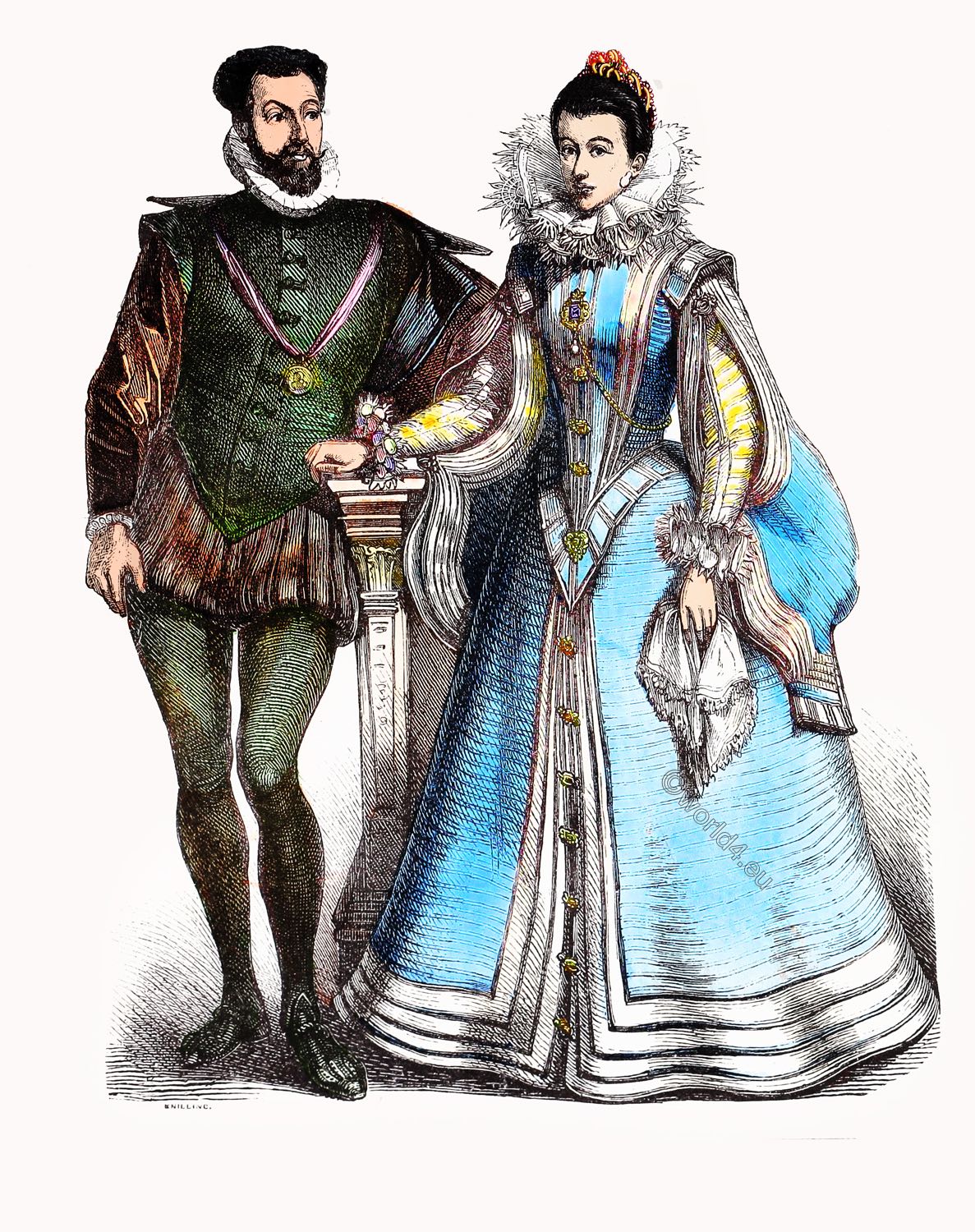
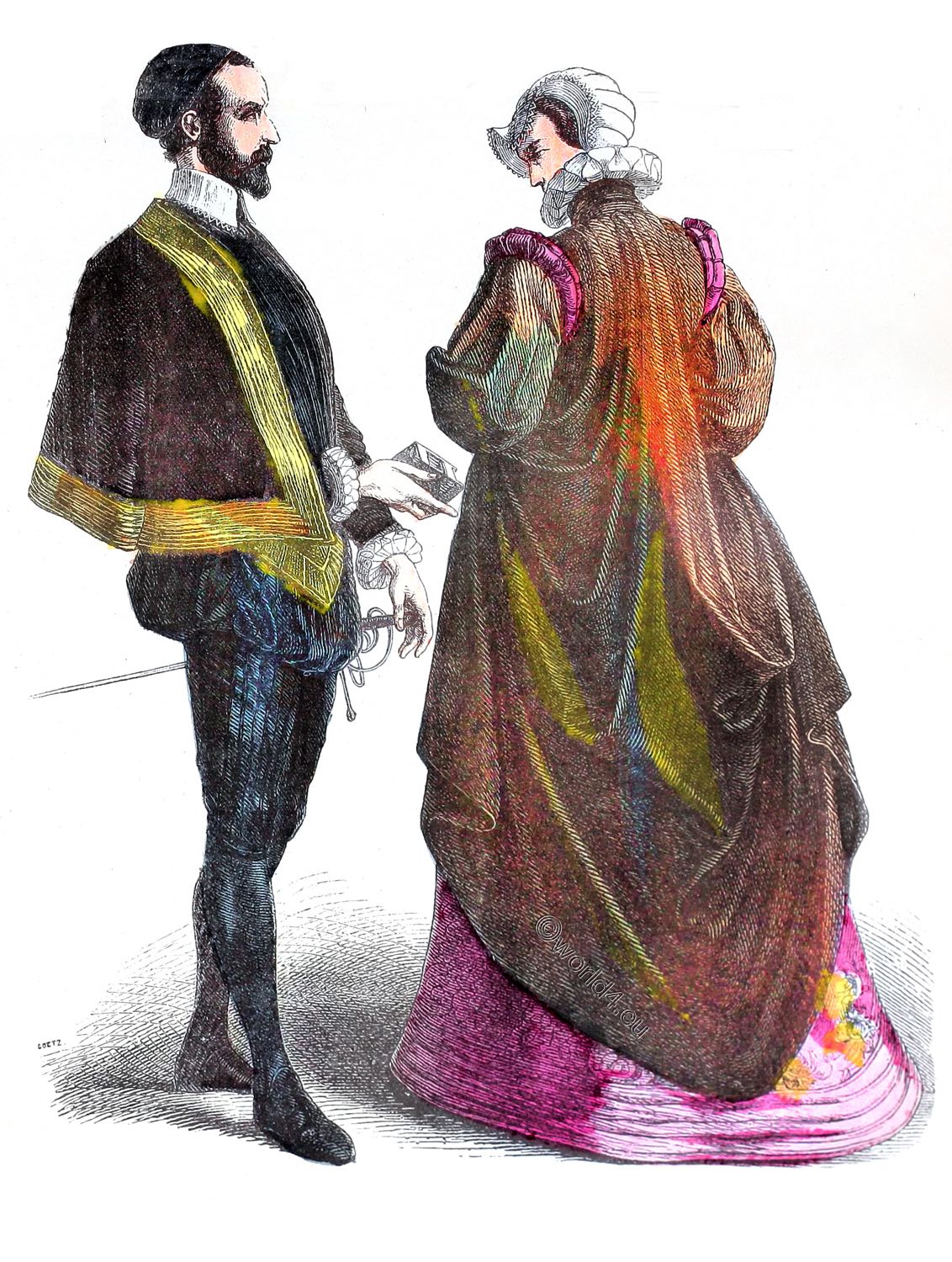
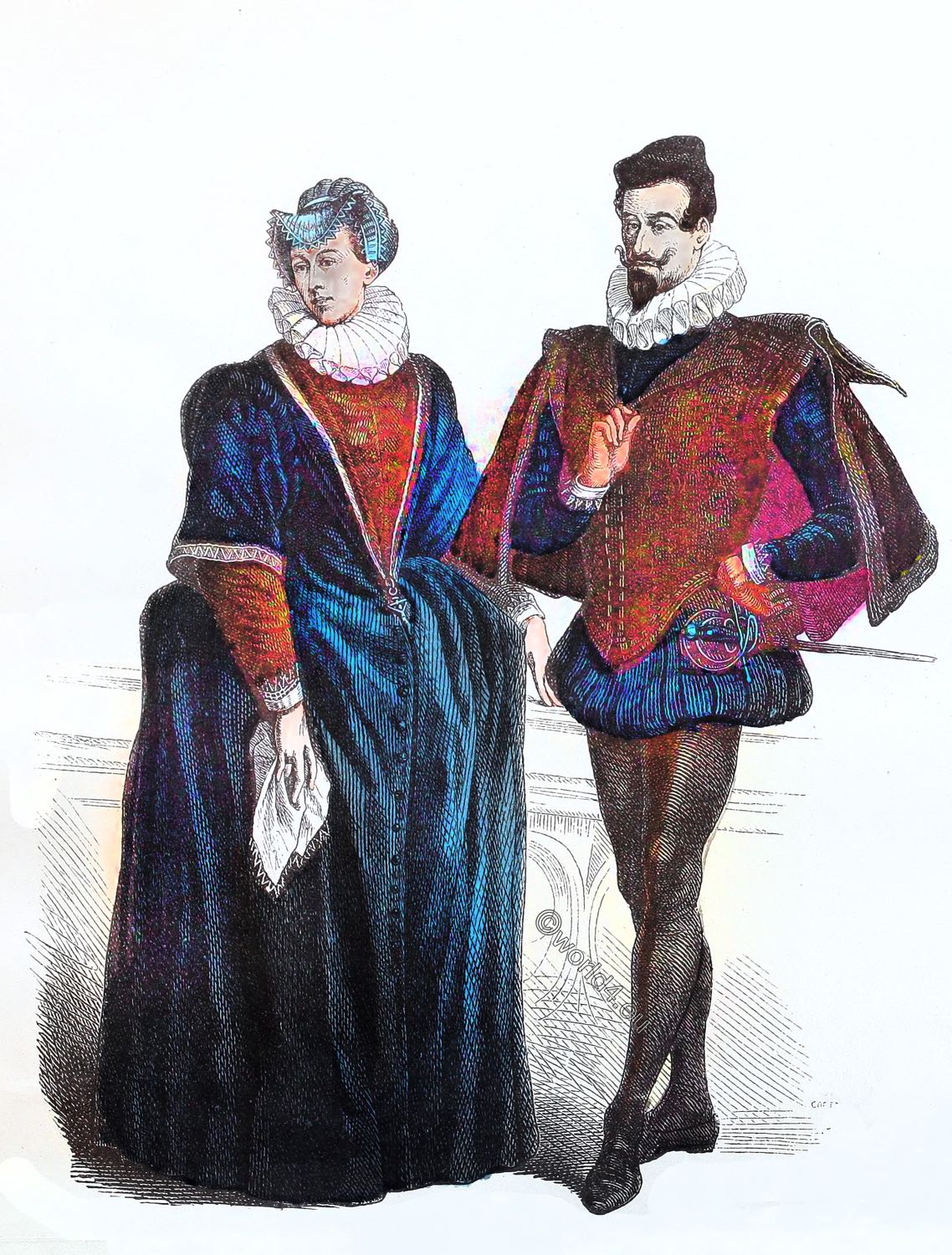
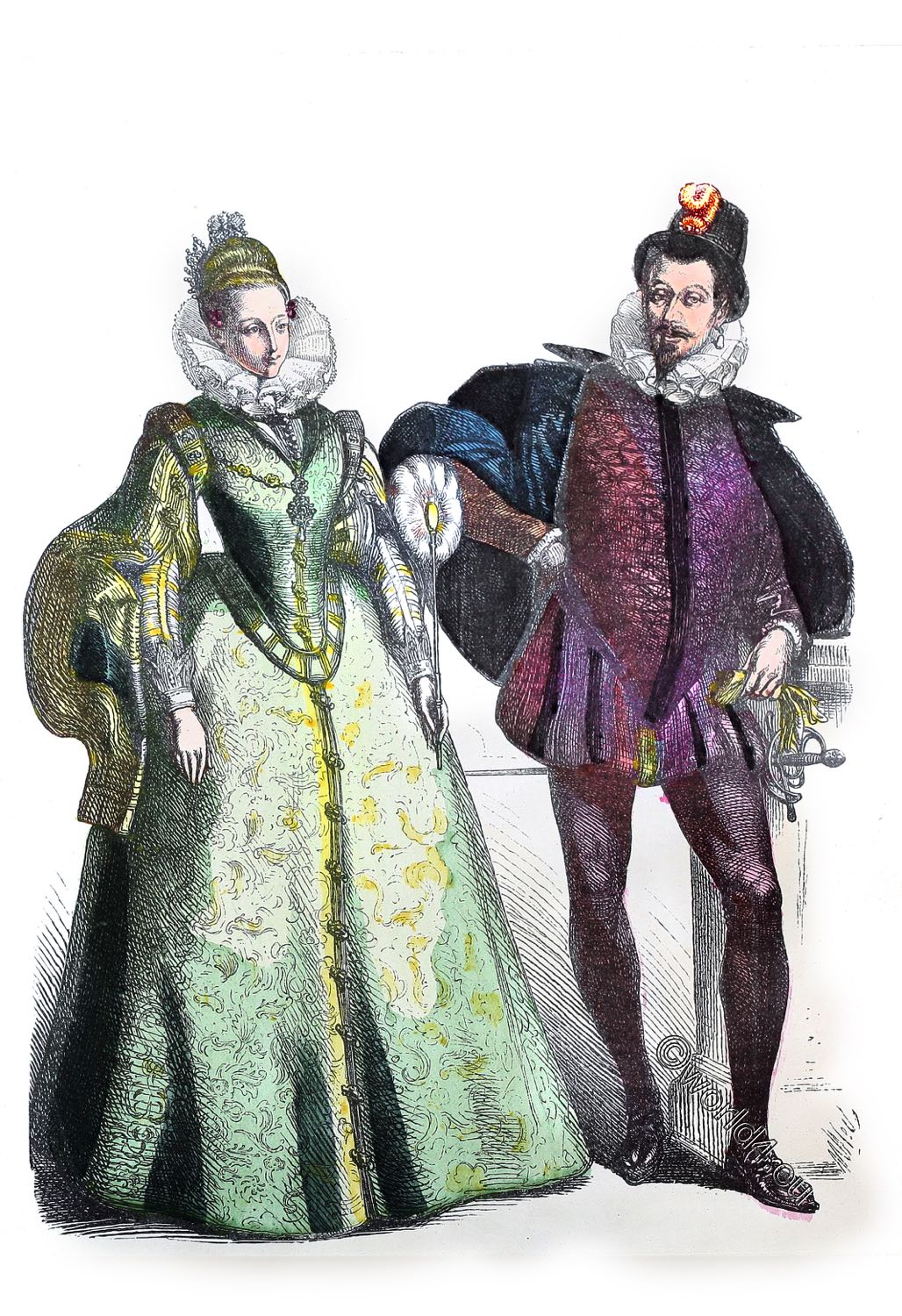
Less wealthy women wore “women’s bacon” as a substitute. It refers to a ring-shaped bulge that women tied around their hips under their skirts. The “women’s bacon” was a flexible, light tube that was placed under the upper skirt to achieve a cylindrical skirt silhouette. In France it was also called vertugadin en bourrelets (guardian of virtue bulge), because under the part partly stuffed with tow the consequences of a pregnancy, also as a result of missteps, could be concealed for a long time. In the first decades of the 17th century, hoop skirts went out of fashion again. An exception is Spain, where a broad-oval shape developed, which is known from Velázquez paintings.
In France and the rest of Europe the hoop skirt did not return until around 1715. At first short and conical, it became dome-shaped and extremely sweeping a little later. This early form was very similar to the chicken baskets (i.e. dome-shaped cages) used at markets at the time, hence the name panier (French “basket”). Even before the French Revolution, the hoop skirt was no longer used in bourgeois clothing as a result of the orientation towards English fashion and was replaced by the Cul de Paris, a cushion placed at the back. Only in the formal and courtly spheres did he survive until the Revolution, in the English court gala even until the early 19th century.
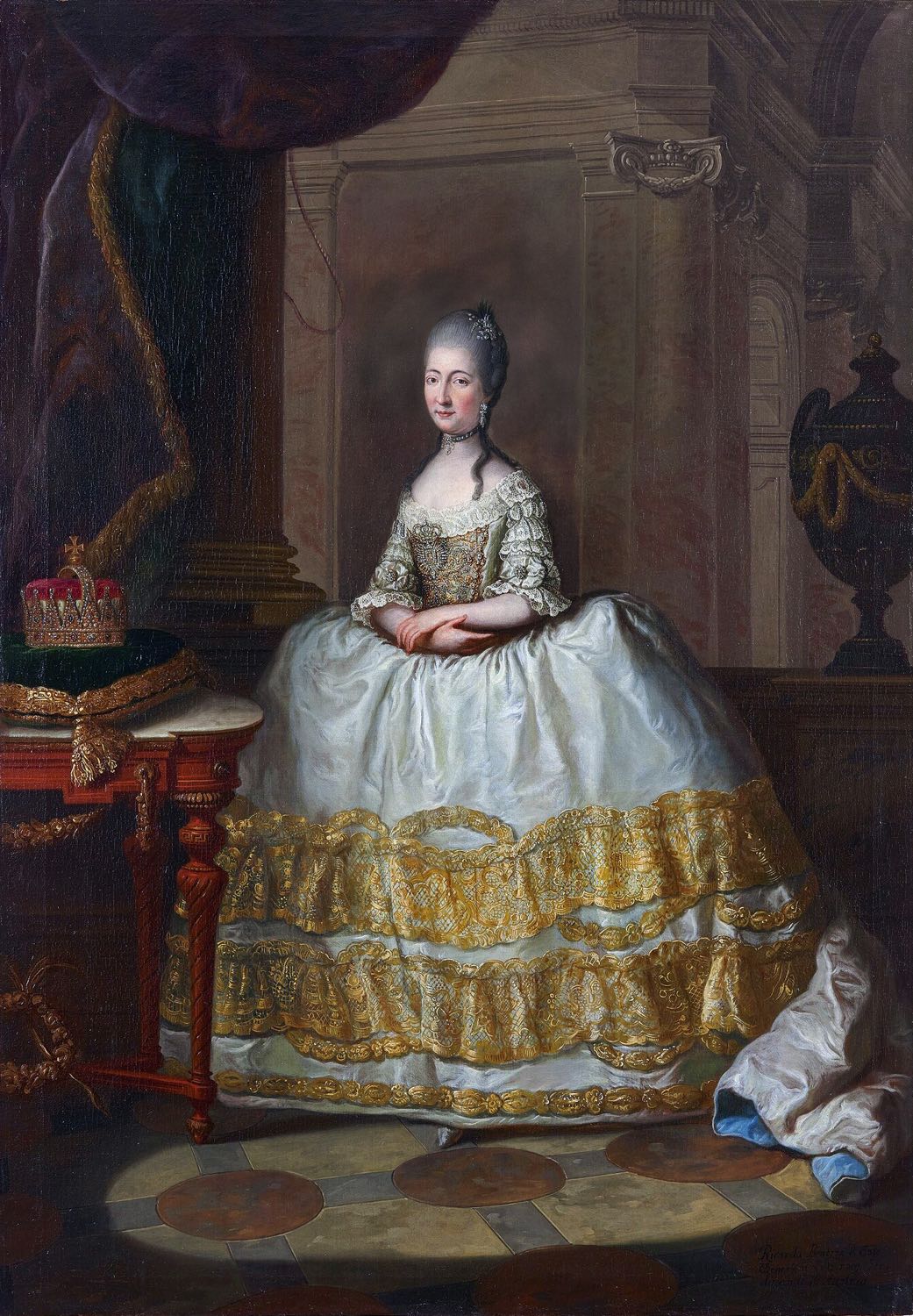
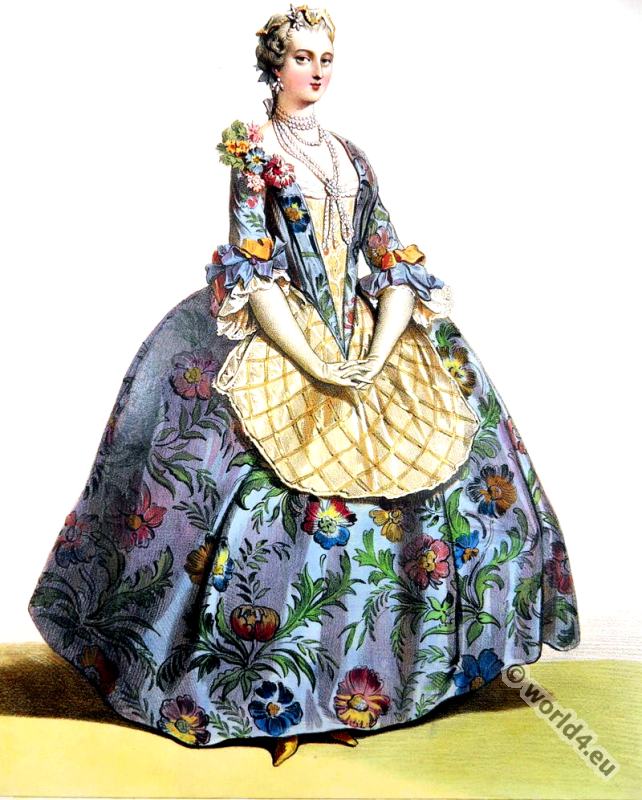
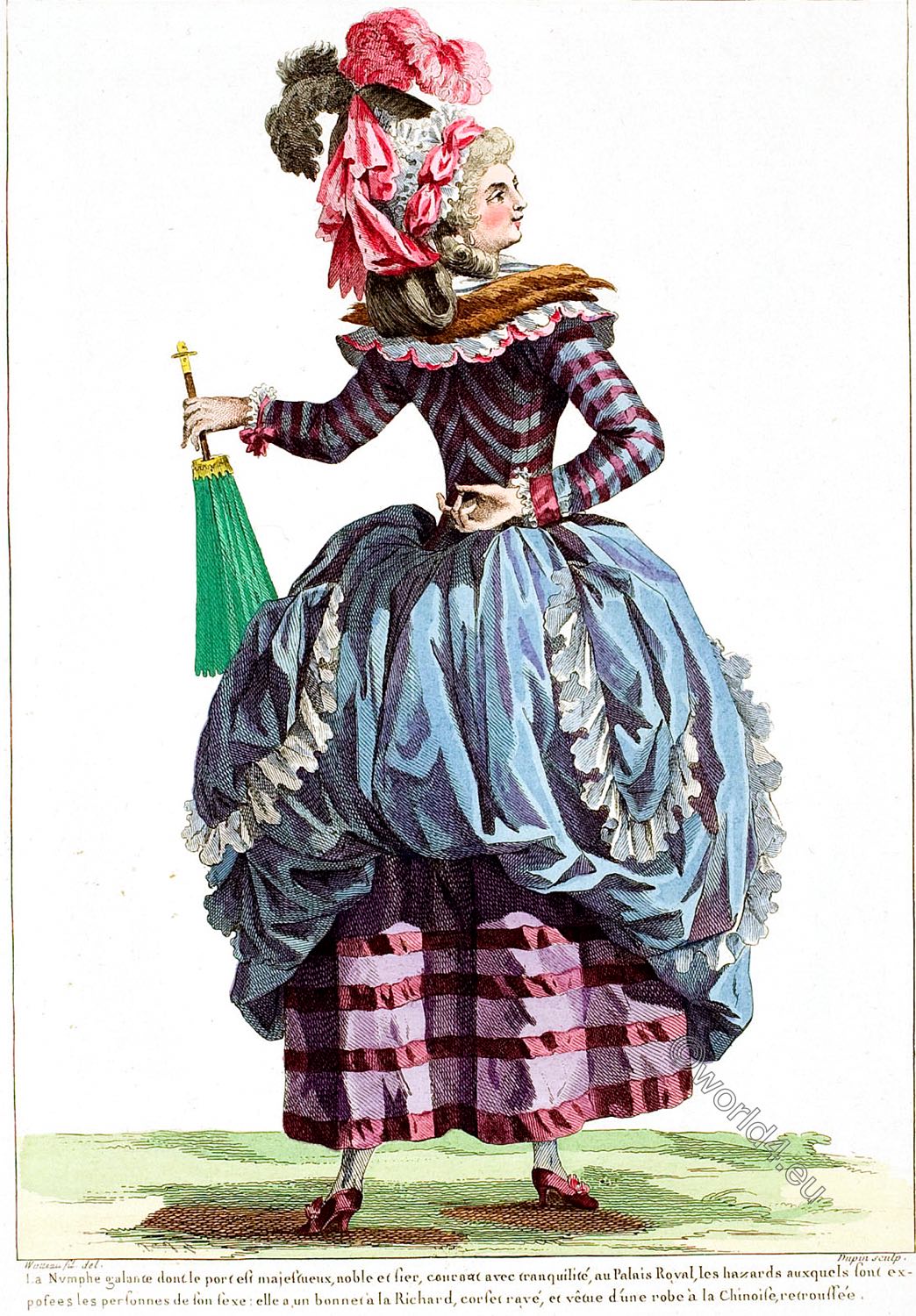
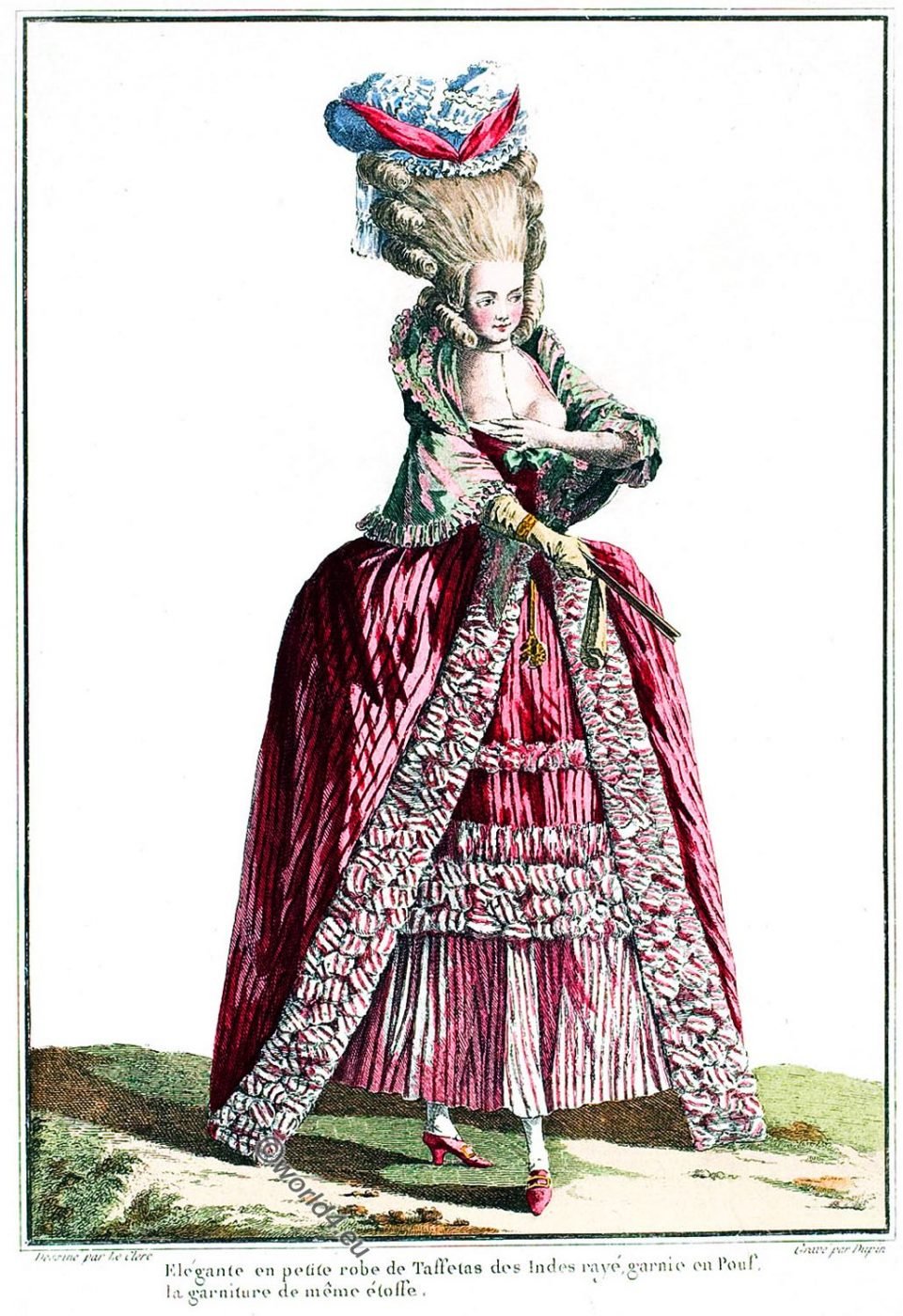
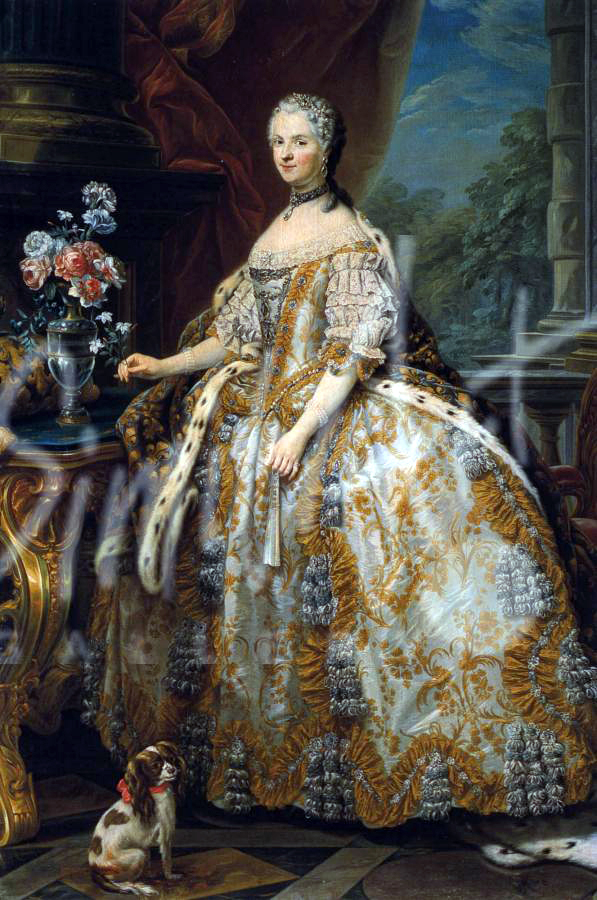

After 1830, the crinoline (Italian-French crin, actually “horsehair fabric”) experienced a renewed renaissance in crinoline fashion, initially as an underskirt made of woven fabric reinforced and shaped with horsehair, which replaced the previously customary wearing of several fabric petticoats. After experiments with whalebone and inflatable rubber hoses, an English construction made of spring steel bands became generally accepted from 1856 onwards. Despite the relatively large amount of steel used, it was still cheaper than the horsehair models, but above all it was easier to shape.
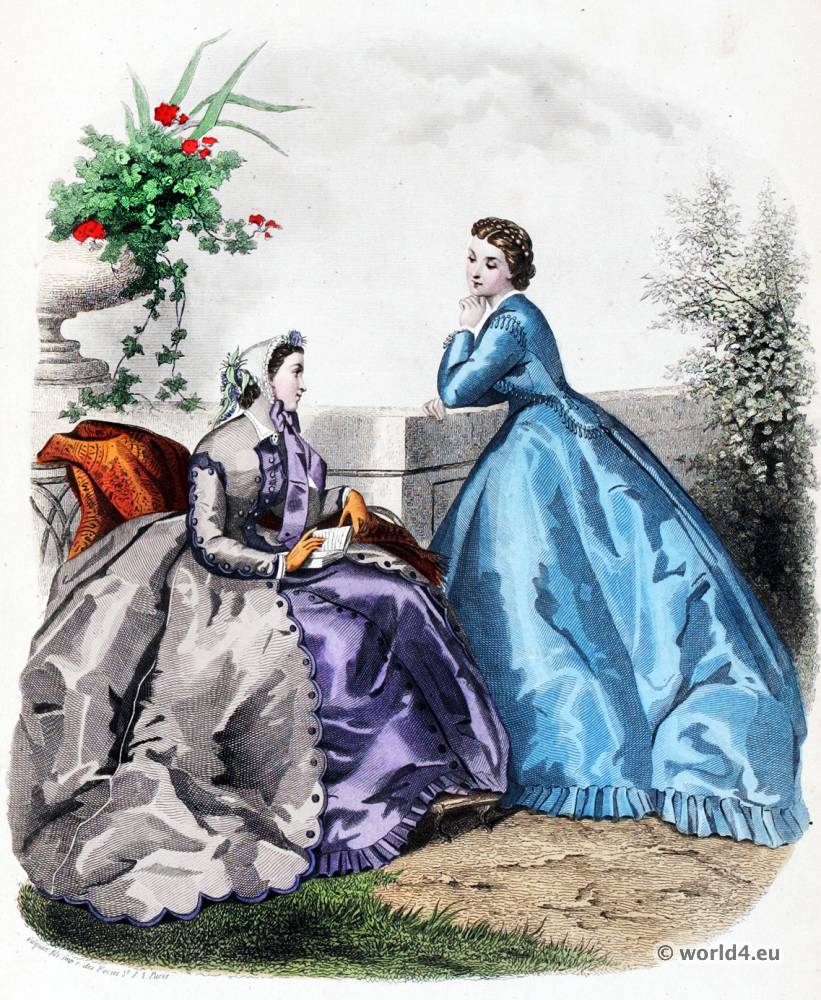
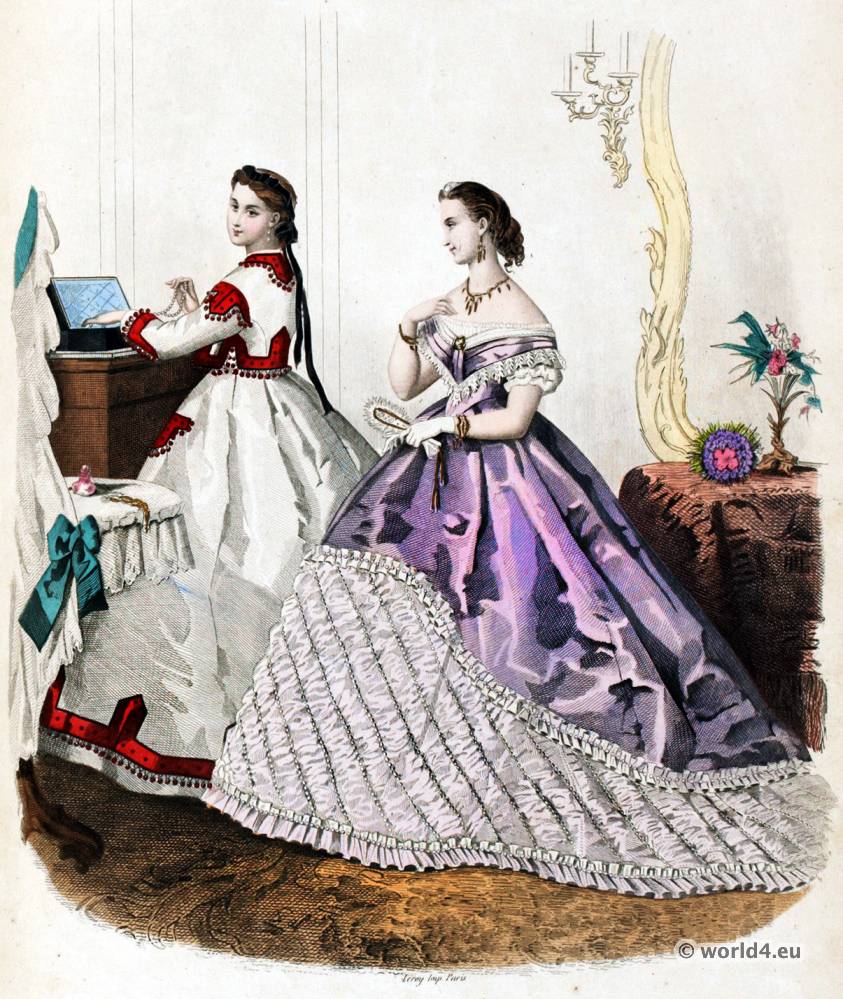
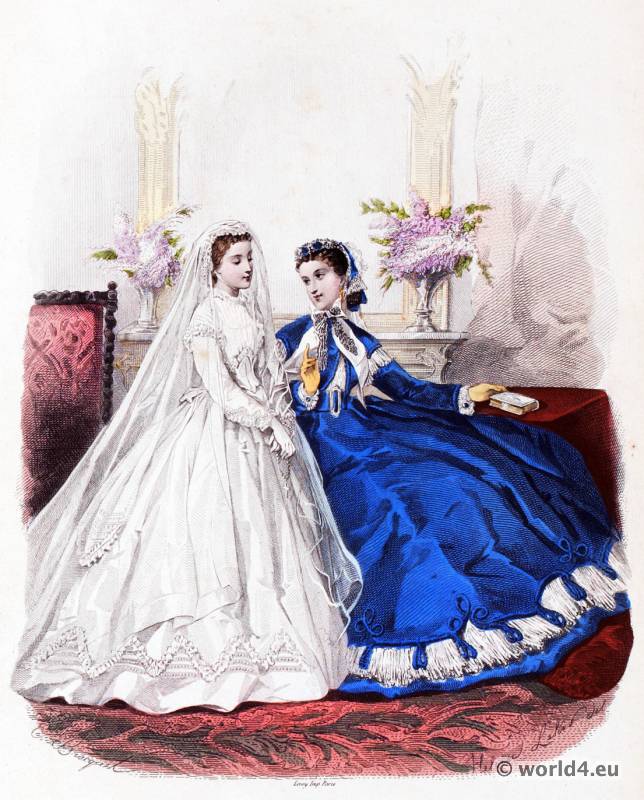

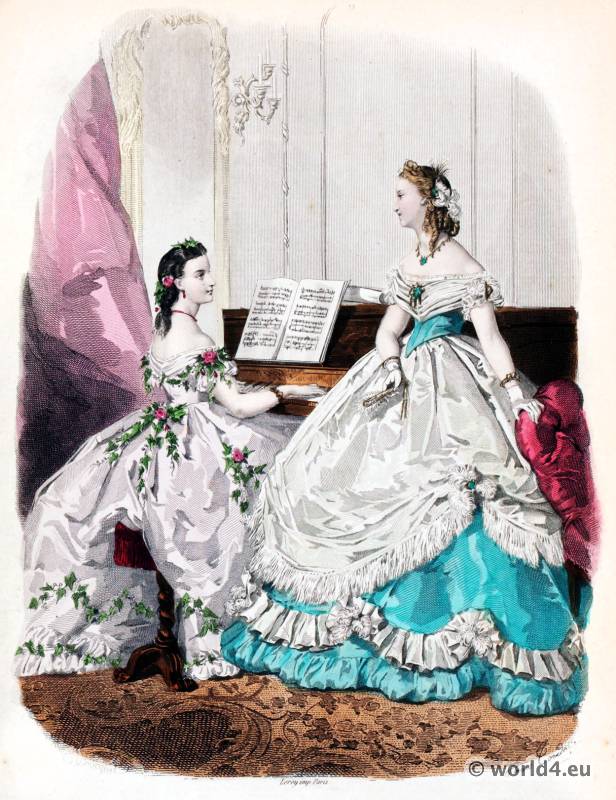

Around 1868 the crinoline reached its most luxuriant width with a hem circumference of six to eight meters.
Around 1870 the crinoline was replaced by the bustle or cul de Paris (French: Tournure for “turn”), which no longer enclosed the entire abdomen, but only built up the skirt above the buttocks with the help of half-frames made of steel, whalebone and/or horsehair. After a short break around 1880, it returned around 1883 as a “second bustle”. Around 1888 the hoop skirt finally disappeared from fashion. Since then it has been used almost exclusively for wedding dresses.
The hoop skirt reverberated again in the 1950s – but without hoops – with the petticoat, which again gave the skirts a distinctly bell-shaped silhouette.
The hoop skirt has dominated three different eras in European fashion, each of which is shown here in five examples. The middle figurine shows in each case the climax, to which the gradual puffing up of the hoop skirt rises, only to fall off again in the last figurines.
The hoop skirt in the age of the Spanish fashion (Renaissance) 16th century.
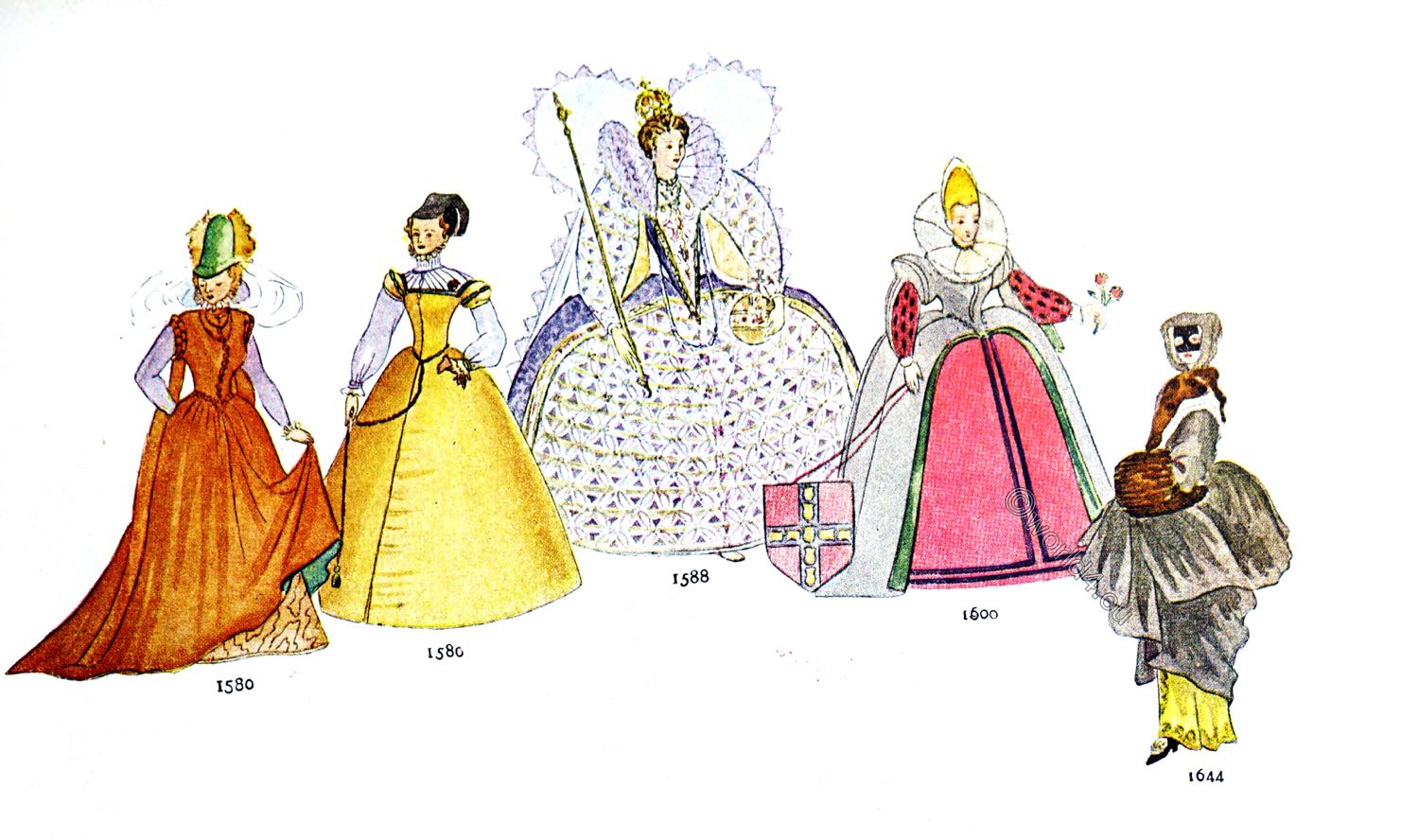
- a. Burgundy with veil.
- b. Spanish fashion at the Parisian court. 1580. After Jost Amman, costume book.
- c. Coronation regalia of Queen Elizabeth I of England. Woodcut 1588. Costume Library Lipperheide, Berlin.
- d. Spanish fashion in France around 1600 according to a French genealogical book.
- e. Spanish hoop skirt, gathered. Time of the Thirty Years’ War, 1644, after an etching by Wenzel Hollar.
The hoop skirt in the age of rococo (Baroque), 18th century.
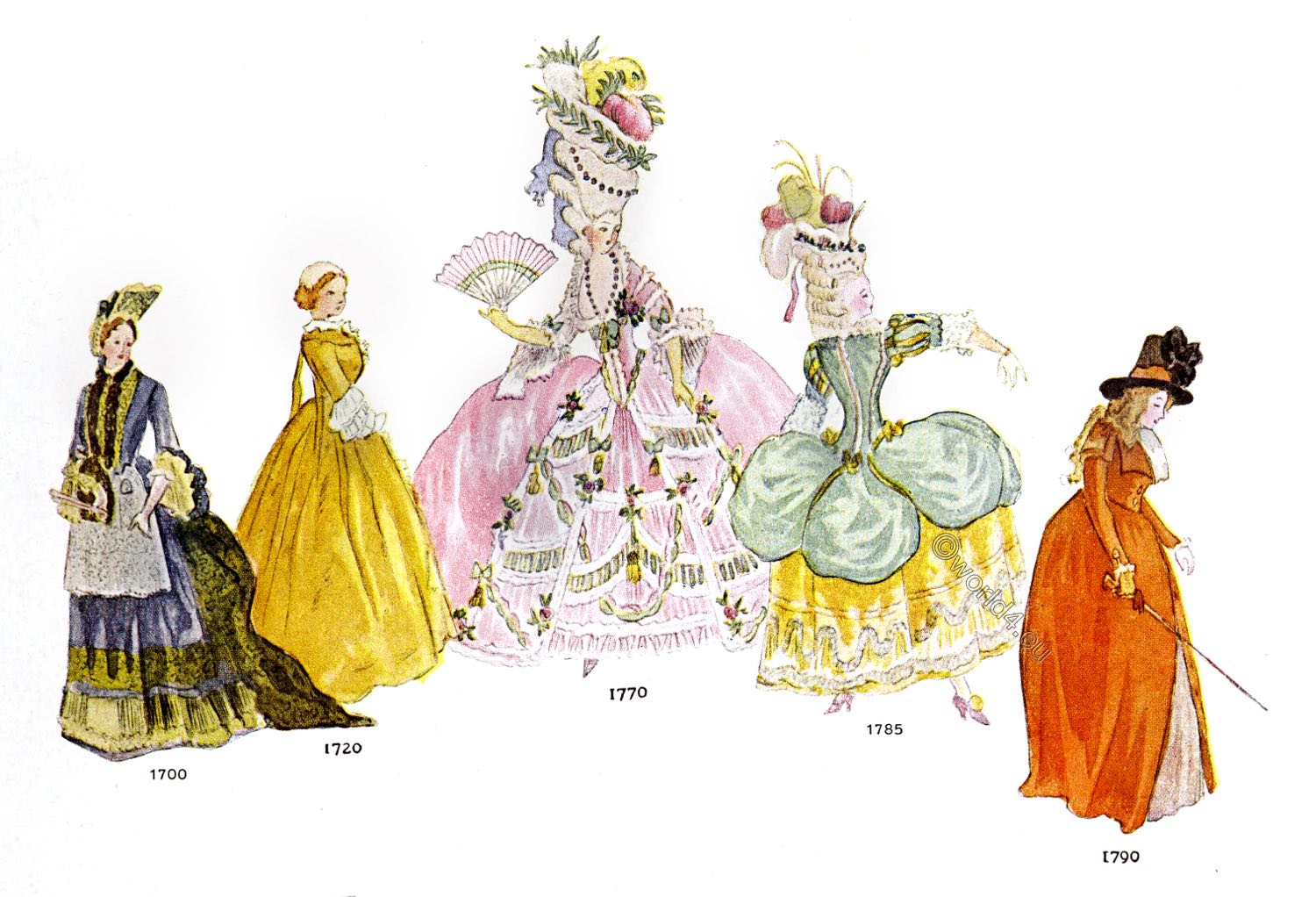
- a. Lady with apron in 1770. After Bonnard.
- b. French “Kontusche” in 1720, after Antoine Watteau.
- c. French rococo, late form in 1770, after a fashion copper by Desrais.
- d. French dance dress, gathered in 1785, after a fashion copper by Le Clerc.
- e. Hunting costume after George Morland in the year 1790.
The hoop skirt in crinoline fashion, 19th century.
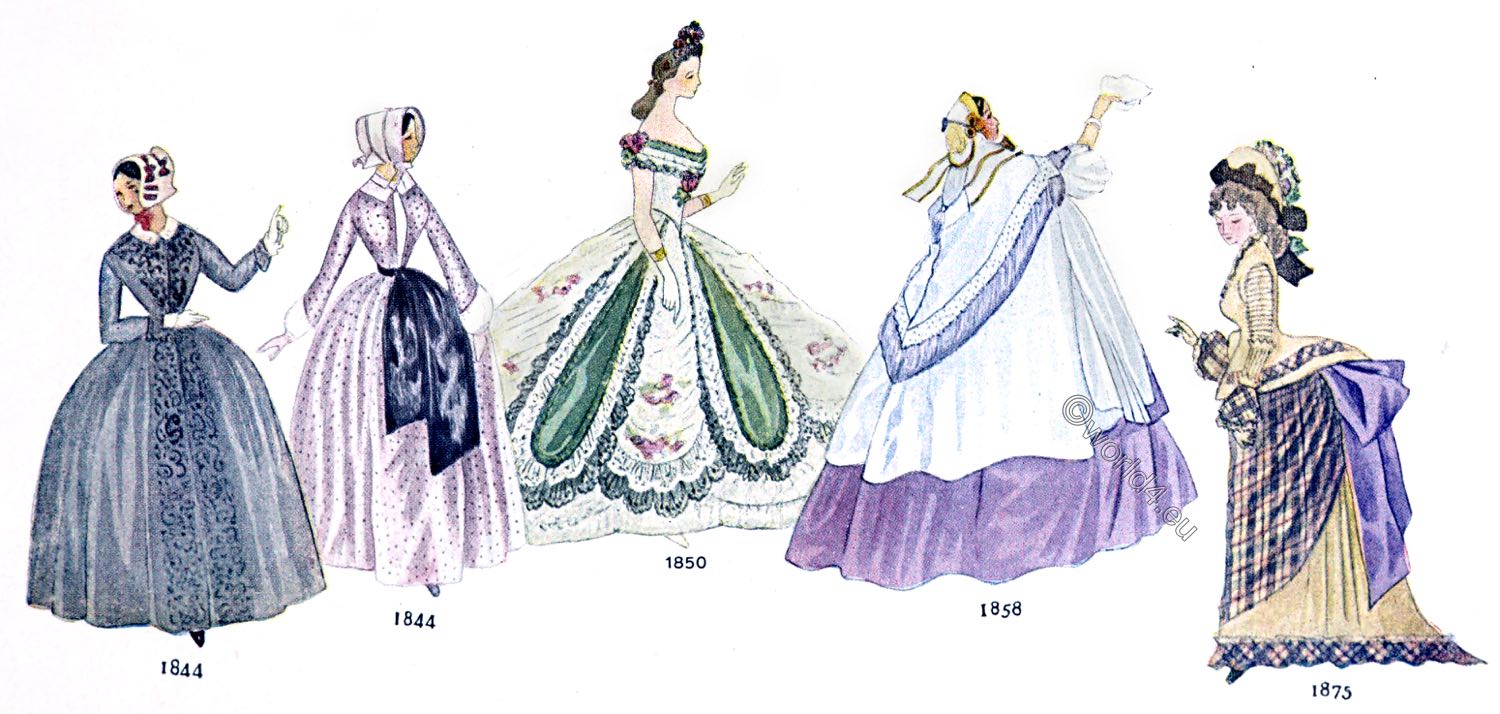
- a. and b. Emergence of the crinoline as a smooth pleated skirt. 1844. Both examples after “Monitor de la Mode”.
- c. Court toilet of Empress Eugenie. 1850. After a French model lithograph.
- d. Berlin fashion of the crinoline era. Travel coat. 1858. According to “Gerson’s Fashion Gazette”.
- e. Fashion of the Wilhelminian period. 1875. After a fashion copper from the costume library of Lipperheide Berlin.
Related
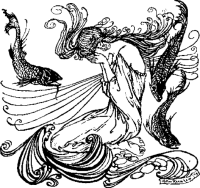
Discover more from World4 Costume Culture History
Subscribe to get the latest posts sent to your email.







